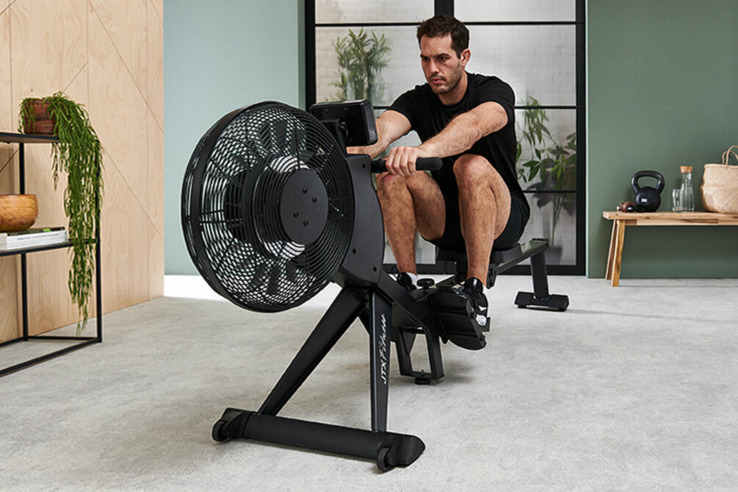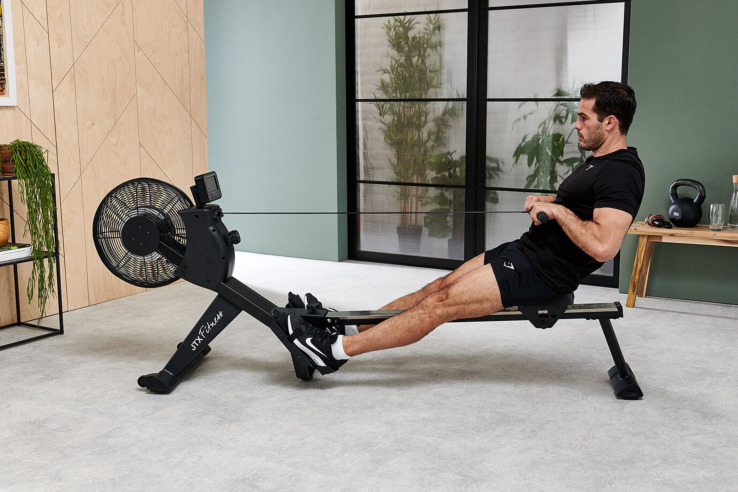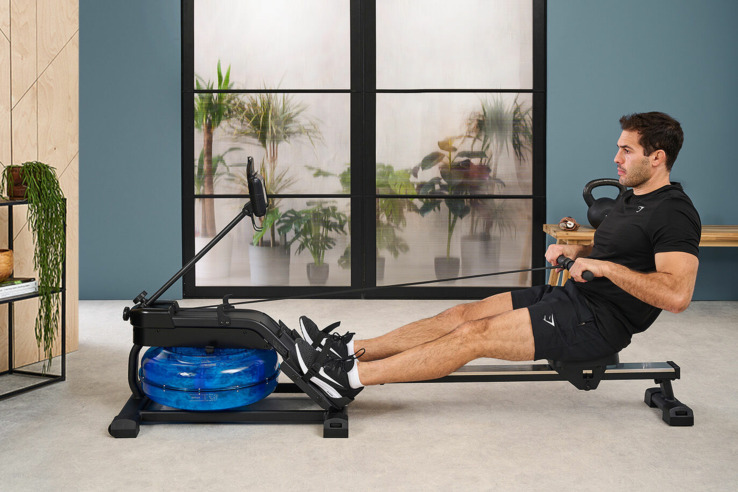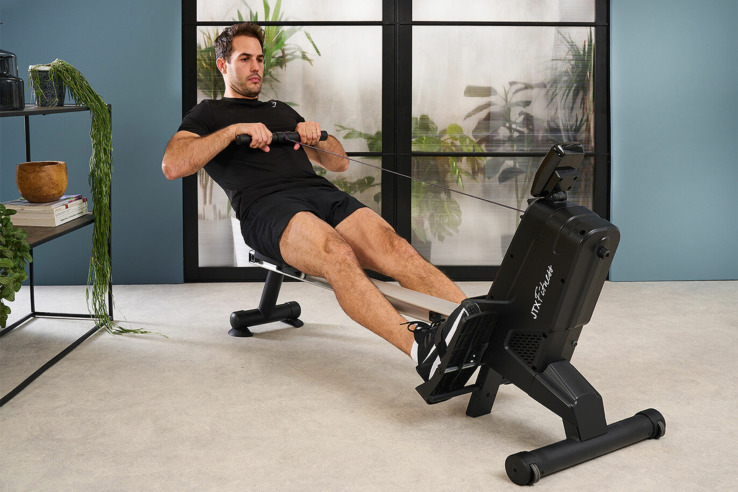You’ve probably heard the term ‘endurance workouts’ tossed around in fitness circles. But what does it mean? At its core, endurance training is about enhancing your body’s ability to sustain prolonged periods of physical activity. It’s not just about building strength or increasing speed—it’s about improving your body’s capacity to keep going, mile after mile, minute after minute.
Now, imagine a single piece of fitness equipment that can deliver a full-body workout, engage both your upper and lower body, improve your cardiorespiratory fitness, and build your endurance—yes, you’ve guessed it, we’re talking about the mighty rowing machine. Despite often being overlooked in the corner of many gyms, the rowing machine—or ‘erg’, as it’s known among rowers—packs a powerful punch as an endurance training tool.
Unlike many other cardio machines, rowing engages every major muscle group in your body. It challenges your lungs, heart, and muscles, training them to work more efficiently over time. By incorporating rowing into your endurance workouts, you’re not only burning calories but also building a healthier heart, strengthening your muscles, and improving your overall stamina.
Rowing Machines For Newbies
The rowing machine has an interesting history. It dates back to the early 20th century when it was used as a training tool for rowers during winter months. Fast-forward to the present day, the erg has evolved and become an integral part of both home and gym fitness, loved by athletes and fitness enthusiasts alike for its effectiveness in providing a high-intensity, low-impact workout.
Before you jump on the rower, it’s essential to understand the dynamics of a rowing stroke. Think of it as a fluid motion divided into four parts: the catch (starting position), the drive (where you push back), the finish (at the end of the drive), and the recovery (as you return to the catch). We’ll delve into the specifics later, but remember, rowing is not just a workout—it’s a rhythm.
The Role of the Rowing Machine in Building Endurance

One of the reasons rowing machines are superb for building endurance is because they provide a whole-body workout. Yes, you heard right, when you row, every significant muscle group in your body is engaged. Your legs provide power during the drive, your core stays engaged throughout the stroke, and your upper body (arms, shoulders, and back) works to pull the handle towards your chest. This all-inclusive nature of the rowing stroke makes the rower a stellar tool for endurance training.
Rowing and Cardiovascular Health
When you’re rowing, your heart and lungs are working overtime to supply oxygen-rich blood to all those working muscles. This intense cardio activity can help improve cardiovascular health by strengthening your heart, reducing the risk of heart disease, and improving lung capacity. It’s a dynamic relationship—rowing strengthens your cardiovascular system, and a stronger cardiovascular system improves your rowing and overall endurance.
Benefits of Rowing for Endurance Enhancement
Rowing, by its nature, is an endurance activity. As you row, you’re improving your body’s ability to use oxygen more efficiently, increase your energy levels, decrease fatigue, and enhance your stamina. Over time, regular rowing can help you build that prized endurance—allowing you to power through your workouts and life’s other challenges with vigor and vitality.
The Proper Rowing Technique

Now, let’s move to the technical side of things. Rowing with the correct form is crucial for getting the most from your workout and preventing injury. Proper posture starts with a strong, straight back, engaged core, and relaxed shoulders. Remember, your power comes from your legs and core, not just your arms or back.
Step-by-Step Guide on Proper Rowing Form
- 1. The Catch: Start at the front of the machine with knees bent and shins vertical. Grip the handle with straight arms and relaxed shoulders.
- 2. The Drive: Push with your legs first, then lean back slightly and pull the handle into your lower chest.
- 3. The Finish: Legs are fully extended, handle pulled into your lower chest, lean slightly back.
- 4. The Recovery: Extend your arms forward, hinge forward from the hips, and then bend the knees to slide forward to the catch position.
Remember, rowing is a fluid and continuous motion. The transitions between each phase should be smooth.
Tip! More about proper rowing technique you can find in our guide: Proper Form and Technique for Using a Rowing Machine.
Common Mistakes to Avoid
Common mistakes while rowing includes overuse of the arms, bending the back, and not using the legs enough. Remember that about 60% of your power should come from your legs, 20% from your core, and 20% from your arms and back. Rowing is a leg-driven exercise.
Brief Introduction to Heart Rate Zones
Understanding your heart rate zones can add another dimension to your rowing workouts. There are typically five heart rate zones based on maximum heart rate: Zone 1 (very light), Zone 2 (light), Zone 3 (moderate), Zone 4 (hard), and Zone 5 (maximum).
The exact percentages can vary, but a common approach is 50-60% for Zone 1 up to 90-100% for Zone 5. Your endurance workouts should generally be in zones 2 and 3.
How Long Should You Row During One Session
For endurance, aim to row for longer periods at a steady, sustainable pace, typically in heart rate zones 2 and 3. As a beginner, you might start with 15-20 minutes and gradually build up to an hour or more. Your exact target duration and heart rate zone will depend on your fitness level and goals. Listening to your body is key – you should be working hard but still able to maintain the pace.
Endurance Workouts Using a Rowing Machine
Warm-Up
Before you start rowing, it’s crucial to prepare your body. A warm-up should include light cardio activity, such as a brisk walk or jog, to get your blood flowing, followed by dynamic stretching to prepare your muscles for the rowing motion. A good warm-up primes your body for the workout, reducing the risk of injury and enhancing performance.
Endurance Workouts with a Rowing Machine
Now let’s delve deeper into the different types of endurance workouts you can undertake on a rowing machine. Each one serves a unique purpose, catering to different aspects of fitness and endurance.
1. Steady-State Workout:
A steady-state workout involves rowing at a moderate, sustainable pace for an extended duration. It’s like taking a long, consistent run. This could be anywhere from 30 minutes to an hour or more, staying in heart rate zones 2 and 3.
This workout is excellent for beginners who are just starting on their rowing journey. It helps to build a strong endurance base while allowing you to focus on improving your rowing technique. Even for seasoned rowers, the steady-state workout is a must as a part of the regular workout regime to maintain and enhance cardiovascular fitness.
2. Interval Training Workout:
Interval training involves alternating periods of high-intensity rowing with periods of low-intensity or rest. For example, you might row hard for 1 minute, then row lightly for 1 minute, and repeat. This keeps your body guessing, improves cardiovascular and muscular endurance, and can help to increase your overall speed and power.
This type of workout is useful when you want to mix up your routine and introduce a little variety. It’s also beneficial if you’re short on time, as interval workouts can often provide a significant metabolic boost in a short duration.
3. Pyramid Workout:
A pyramid workout involves varying the duration of your hard and easy rowing periods, typically in a pattern that gradually increases and then decreases. For example, you could row hard for 1, 2, 3, 2, and then 1 minute, with equal periods of easy rowing in between. This workout improves your body’s ability to handle different intensities and recover from hard efforts.
This workout can be a fun challenge for more experienced rowers or once you’ve built a decent endurance base with steady-state and interval workouts. The variations in intensity keep the workout interesting while pushing your limits.
4. Long-Distance Workout:
In a long-distance workout, you simply set a target distance and row at a steady pace until you reach it. This can be a fun way to simulate the demands of long-distance rowing races or events like triathlons.
This kind of workout can be a fantastic goal-setting exercise. Perhaps you want to work towards rowing 10,000 meters or even a marathon! Regularly incorporating long-distance workouts can help you reach these milestones while significantly building your endurance.
Deciding on the Right Workout:
Each of these workouts has its place in a balanced training regimen. You could alternate between them throughout the week based on your fitness goals. For example, you might do a steady-state workout on Monday, an interval workout on Wednesday, and a long-distance workout on Friday. This gives your body a chance to recover between workouts while still providing varied stimuli to improve your fitness.
As you progress and your fitness improves, you can start to increase the intensity and duration of these workouts. Always remember to listen to your body, though. It’s essential to balance challenging yourself with allowing adequate recovery time.
In conclusion, mixing up your rowing workouts not only helps improve your endurance but also keeps things exciting and engaging, so you’re more likely to stick with your training plan. Remember, the key is consistency and gradual progression.
How to Customize Workouts to Individual Needs
Each of the workouts above can be adapted based on your current fitness level and your specific goals. If you’re a beginner, start with shorter durations or distances and gradually build up. If your goal is to row a marathon, you’ll want to focus more on the steady-state and long-distance workouts. Always remember, the goal is a progressive improvement over time, not instant perfection.
Recovery after the Workout
The Importance of Recovery after Rowing Workouts
After an intense rowing session, your body needs time to recover. This recovery period allows your body to adapt to the stress of the workout, replenish energy stores, and repair damaged tissues. Incorporating recovery time into your training plan is essential to improve performance and prevent injuries.
Nutrition Tips for Before Workouts
Before workouts, focus on carbohydrates, which provide energy, and proteins, which prevent muscle breakdown. A meal or snack containing both is ideal. For example, a banana and a cup of Greek yogurt could be a great pre-workout meal.
Nutrition Tips for After Workouts
After workouts, the goal is to replenish energy stores and repair and rebuild muscles. This calls for a balance of carbohydrates to replenish glycogen stores and protein to repair and build muscle. A post-workout meal might be a grilled chicken breast with a side of brown rice and veggies.
Conclusion

Let’s circle back to the main theme. Using a rowing machine for endurance workouts can yield significant benefits, including a full-body workout, improved cardiovascular health, and enhanced stamina and endurance. It’s a versatile piece of equipment that can provide a wide range of workouts suitable for all fitness levels. Whether you’re a beginner or an experienced athlete, rowing can add a new and challenging dimension to your training routine.
Are you ready to take your endurance to the next level? The rowing machine is calling your name. Don’t let it gather dust in the corner of your gym. Instead, embrace it, master it, and let it lead you on a journey towards greater stamina, energy, and endurance. Remember, each stroke brings you one step closer to a healthier, fitter, more powerful you. The key is consistency. So, why wait? Let’s get rowing!
This concludes our comprehensive guide on endurance workouts using a rowing machine. While the journey might be challenging, remember that the beauty lies in the struggle, the continuous improvement, and the personal records shattered along the way. As with any fitness journey, the most important step is the first one. So, strap in, grab the handle, and start rowing towards a fitter, stronger, more enduring you.
Remember, fitness is not a destination, it’s a way of life! And rowing could be a brilliant addition to your lifestyle, taking your endurance and overall health to new heights. So, let’s conquer those waves, one stroke at a time!
